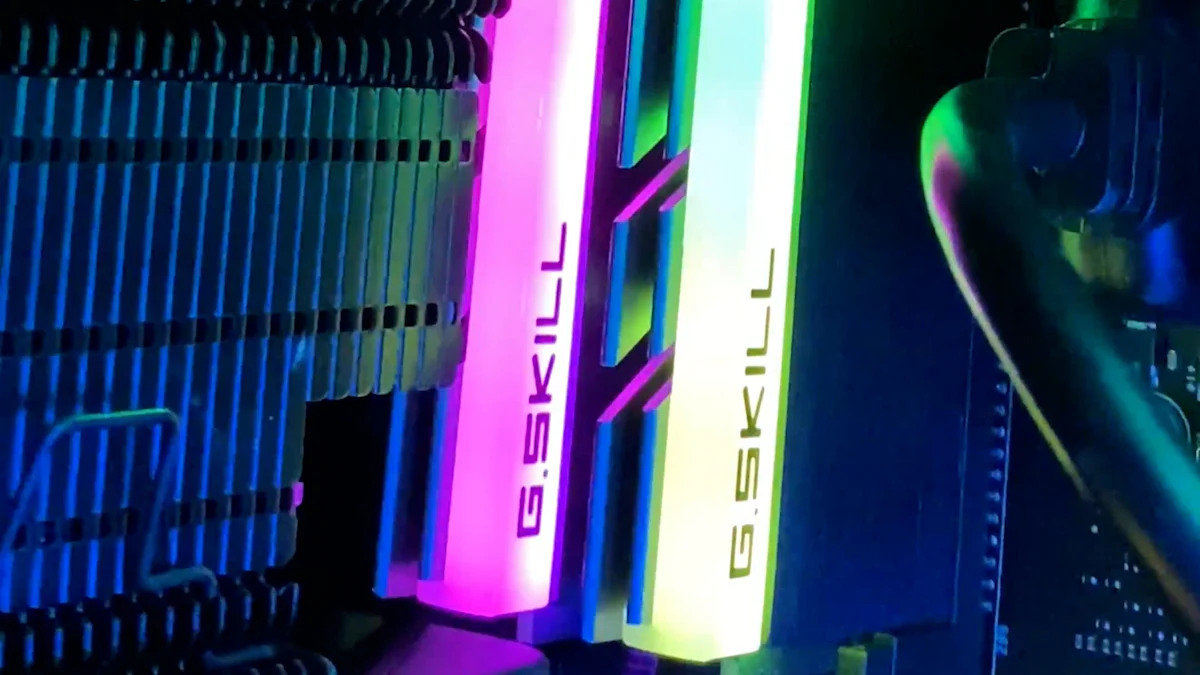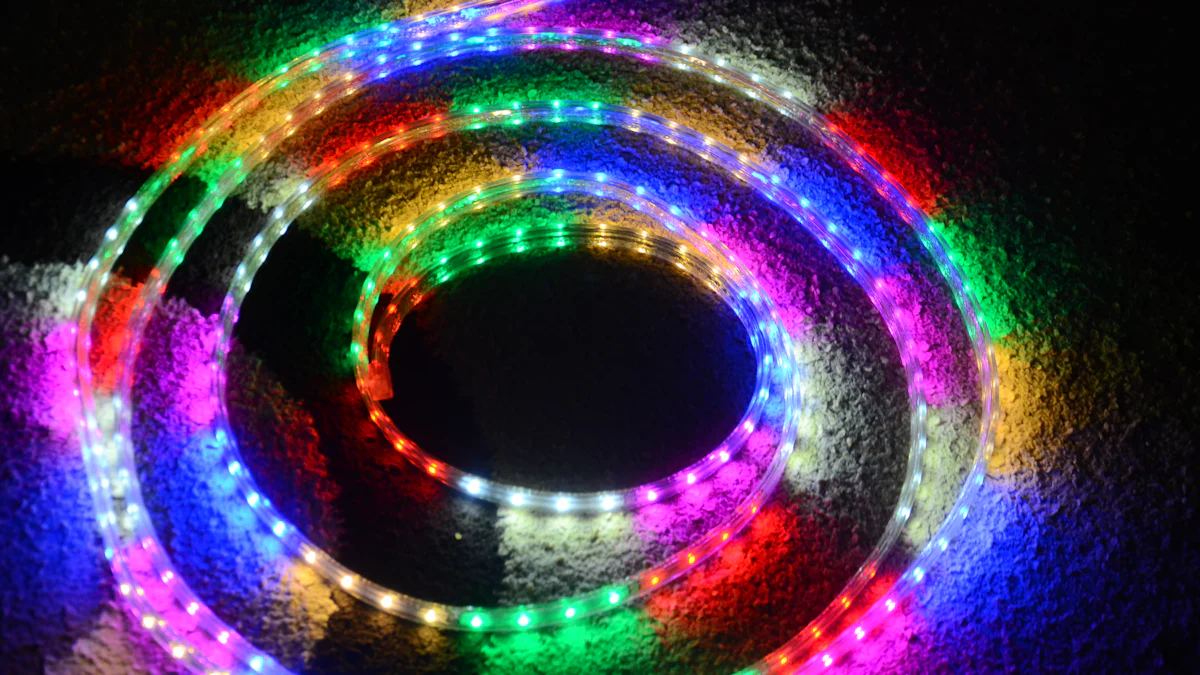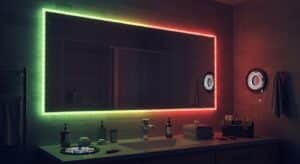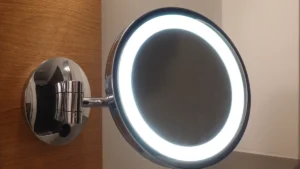
LED strip lights have revolutionized modern lighting with their versatility and vibrant effects. RGB and RGBW strips combine red, green, and blue diodes to create a spectrum of colors, with RGBW strips adding a white diode to enhance functionality by producing pure white light and improving color accuracy. This addition makes RGBW strips ideal for applications requiring nuanced lighting effects. Whether you need accent lighting for your home or dynamic displays for events, understanding RGB and RGBW can help you choose the right option. The growing demand for energy-efficient lighting has made these RGB and RGBW strips a popular choice in residential and commercial settings.
Key Takeaways
RGB LED strips make bright colors by mixing red, green, and blue. They are great for decoration.
RGBW LED strips have a white light part. This makes pure white light and better colors for many uses.
When picking RGB or RGBW, think about your budget. Also, decide what kind of lighting effects you want.
RGBW strips use less energy to make white light. They are cheaper to use for a long time.
Think about what you need. RGB strips are fun for colorful displays. RGBW strips work well for both decoration and useful lighting.
Understanding RGB and RGBW LED Strips

What Is an RGB LED Strip?
Components of an RGB LED strip
An RGB LED strip consists of multiple light-emitting diodes (LEDs) that emit red, green, and blue light. These LEDs are arranged along a flexible circuit board, making the strip easy to install in various spaces. Each LED is powered by a low-voltage DC power source and controlled by a controller, which adjusts the brightness and intensity of the lights. The strip uses a four-wire configuration, simplifying its setup.
How RGB LEDs create colors
RGB LED strip lights produce a wide range of colors by mixing red, green, and blue light at varying intensities. This process, known as additive color mixing, allows you to create almost any color within the visible spectrum. For example, combining red and green creates yellow, while red and blue produce magenta. Each LED can generate 256 shades, resulting in approximately 16.7 million possible colors. However, when RGB LEDs attempt to simulate white light, the result often has a bluish or warm tint, as they lack a dedicated white diode.
What Is an RGBW LED Strip?
Components of an RGBW LED strip
An RGBW LED strip builds upon the RGB design by adding a dedicated white LED chip to each diode. This addition enables the strip to produce pure white light and enhances its overall functionality. The white diode can emit various tones, such as warm white or cool white, depending on your needs. RGBW LED strips require a five-wire setup due to the extra white channel, making them slightly more complex than RGB strips.
How the white diode enhances functionality
The white diode in RGBW LED lights significantly improves lighting quality. It produces a true, pure white light, overcoming the limitations of RGB LED strips. This feature enhances color mixing, allowing for pastel shades and soft colors that RGB strips cannot achieve. The white diode also makes RGBW lighting more versatile, as it can switch between vibrant colors and functional white lighting. Whether you need decorative or task lighting, RGBW LED strip lights provide a dual-purpose solution.
Key Differences Between RGB and RGBW

Brightness and Light Quality
When comparing brightness, RGBW LED strips outperform RGB LED strips. The addition of a dedicated white diode in RGBW strips enhances brightness and provides a purer, more authentic white illumination. This makes RGBW strips ideal for applications requiring strong luminosity and lifelike white light. RGB strips, on the other hand, rely on mixing red, green, and blue to create white, which often results in a bluish or warm tint.
Features | RGB LED Strip Lights | RGBW LED Strip Lights |
|---|---|---|
Brightness | Moderate | Enhanced |
White Light Quality | Blended and tinted | Pure and authentic |
RGBW strips also produce a broader range of white tones, from cool white that mimics daylight to warm white resembling a sunset glow. This versatility improves the overall light quality, making RGBW strips suitable for both decorative and functional lighting.
Color Rendering and Accuracy
RGBW LED strips excel in color rendering due to their independent white diode. This diode allows RGBW strips to produce nuanced shades and better color accuracy. RGB strips, by contrast, struggle to achieve true white and often render colors with less clarity.
Metrics like CRI (Color Rendering Index) and TM-30 standards evaluate color accuracy. RGBW strips typically score higher on these metrics, offering more saturated and lifelike colors. For example:
Metric | Description |
|---|---|
CRI | Measures how closely the observed light renders colors like natural sunlight. |
Fidelity Index (TM-30) | Evaluates color rendering using 99 color samples for a comprehensive assessment. |
Gamut Index (TM-30) | Reflects color intensity by analyzing saturation or desaturation. |
RGBW strips provide superior color rendering, making them a better choice for environments where accurate lighting is essential.
Energy Efficiency
RGBW LED strips are more energy-efficient when producing white light. The dedicated white diode consumes less power compared to RGB strips, which mix three colors to simulate white. Non-addressable RGB LED strips improve efficiency by eliminating controllers, but RGBW strips still lead in energy savings.
Higher voltage configurations, such as 24V or 48V, further enhance the efficiency of RGBW strips. These configurations reduce energy loss, making RGBW strips a cost-effective option for long-term use.
Tip: If energy efficiency is a priority, choose RGBW LED strips with higher voltage options for optimal performance.
Applications and Use Cases
You can use RGB and RGBW LED strip light options in a variety of creative and practical ways. RGB strips are perfect for adding vibrant colors to spaces. They work well for accent lighting in bedrooms, gaming setups, or even under cabinets. RGBW strips, however, offer more versatility. Their dedicated white diode allows you to switch between colorful lighting and functional white light, making them ideal for living rooms, kitchens, or home theaters.
For modern interior design, RGBW strips enhance architectural features. You can outline bars, highlight staircases, or create gradient effects with advanced RGBIC technology. These strips also shine in hospitality settings. They adapt to seasonal decor or branding needs, providing both ambiance and practicality. If you’re planning a festival or event, RGBW strips can create dynamic backdrops or light shows. Their ability to produce accurate colors and bright white light makes them a favorite for stage performances.
Artists and DIY enthusiasts also love RGBW strips. They use them for interactive art installations that respond to sound or movement. Whether you’re designing a cozy home or a dramatic event, RGB and RGBW strips offer endless possibilities. Their flexibility ensures they meet your lighting needs, whether decorative or functional.
Cost Considerations
When comparing costs in the RGB vs RGBW debate, RGB strips are generally more affordable. The absence of a white diode makes them a budget-friendly choice. RGBW strips, while slightly more expensive, provide better brightness and color accuracy. If you need pure white light or versatile lighting, the extra cost of RGBW strips is worth it.
Here’s a quick breakdown of cost hierarchies for different LED strip light types:
Type of LED Strip | Cost Hierarchy |
|---|---|
Standard RGB Strips | Lowest |
RGBW/RGBWW Strips | Medium |
RGBCW Strips | Higher |
RGBCCT Strips | Higher |
RGBIC Strips | Highest |
The cost of RGB and RGBW strips also depends on factors like quality, length, and technology. Adhesive backing and waterproofing can increase the price. While RGB strips are cheaper upfront, RGBW strips save energy in the long run. Their dedicated white diode consumes less power when producing white light. If you’re looking for long-term savings, RGBW strips are a smart investment.
Tip: Consider your specific needs and budget before choosing. RGB strips are great for decorative lighting, while RGBW strips excel in both decorative and functional applications.
Pros and Cons of RGB and RGBW
Pros of RGB LED Strips
RGB LED strips offer several advantages that make them a popular choice for creative lighting projects.
Dynamic Multi-Color Effects: These strips can display multiple colors at once, creating vibrant and lively lighting displays.
Customizable Light Patterns and Animations: You can program various patterns and effects, giving you flexibility to match specific themes or moods.
Increased Creative Freedom for Decoration: Independent control of segments allows you to tailor the lighting to your preferences.
Enhanced Ambiance and Visual Appeal: The ability to mix colors helps you create immersive environments and improve the atmosphere of any space.
RGB LED strips are ideal for decorative purposes, especially when you want to add a splash of color to your home or event.
Tip: Use RGB LED strips for accent lighting in gaming setups or party decorations to achieve a dynamic and colorful effect.
Cons of RGB LED Strips
While RGB LED strips are versatile, they come with some drawbacks.
Physical Damage: Rough handling during installation can damage the LEDs or circuitry.
Temperature Extremes: High heat can harm components, while extreme cold can make materials brittle.
Electrical Overload: Exceeding voltage ratings may cause overheating or burnout.
Chemical Exposure: Harsh chemicals can deteriorate protective coatings.
Incorrect Installation: Improper setup can lead to premature failure.
Age and Usage: Over time, the LEDs may dim and lose their original color intensity.
These limitations mean you need to handle RGB LED strips carefully and ensure proper installation to maximize their lifespan.
Pros of RGBW LED Strips
RGBW LED strips provide enhanced functionality and lighting quality, making them a superior option for many applications.
RGBW strips deliver better color mixing and nuanced lighting effects.
The dedicated white diode produces pure white light, improving functionality.
They are suitable for both decorative and functional lighting needs.
RGBW strips excel in producing purer and more saturated white tones compared to RGB strips. The addition of the white LED enhances color rendering and broadens the palette of available shades. This makes RGBW strips ideal for designers and decorators.
Feature | Description |
|---|---|
Color Temperature Range | RGBW LED strips can achieve a range from warm white (2700K) to cool white (6500K). |
Adaptability | They are adaptable to various lighting needs, unlike traditional RGB strips. |
Note: RGBW LED strips are perfect for spaces where you need both vibrant colors and functional white lighting, such as kitchens or living rooms.
Cons of RGBW LED Strips
RGBW LED strips offer impressive functionality, but they come with certain drawbacks you should consider before making a purchase.
Higher Cost: RGBW LED strips are more expensive than traditional RGB options. The inclusion of a white diode increases manufacturing complexity, which raises the price. Additionally, these strips require specialized RGBW controllers to manage the white diode and other colors. This adds to the overall cost of your lighting setup.
Increased Complexity: Each LED in an RGBW strip contains four chips—red, green, blue, and white. This design makes RGBW strips more intricate to manufacture and slightly more challenging to install. You may need to invest extra time and effort to ensure proper setup.
Power Consumption: While RGBW strips are energy-efficient when producing white light, using all four diodes simultaneously can increase power usage. This may lead to higher electricity bills if you frequently use complex lighting effects.
Limited Compatibility: RGBW LED strips often require specific controllers and power supplies. If you already own RGB controllers, they may not work with RGBW strips. This could mean additional expenses for compatible equipment.
Potential Overkill for Simple Projects: If you only need basic accent lighting or vibrant colors, RGBW strips might be unnecessary. The added white diode and advanced features could go unused, making them less cost-effective for simpler applications.
Tip: Evaluate your lighting needs carefully. If you don’t require pure white light or advanced functionality, RGB strips might be a better fit for your project.
Despite these disadvantages, RGBW LED strips remain a versatile option for those seeking high-quality lighting with both decorative and functional capabilities.
Choosing the Right LED Strip for Your Needs
Factors to Consider
Budget
Your budget plays a significant role in choosing between RGB and RGBW LED strips. RGB strips are more affordable, making them a practical choice for projects focused on cost. On the other hand, RGBW strips, while slightly more expensive, offer superior light quality. If you prioritize pure white illumination and enhanced brightness, the additional cost of RGBW strips is justified.
RGB strips are the most budget-friendly option for flexible LED strip light projects.
RGBW strips provide better functionality and light quality, making them worth the investment for demanding applications.
Desired lighting effects
The type of lighting effects you want will influence your decision. RGB strips excel in creating vibrant, colorful displays. They are ideal for accent lighting where color diversity is the main focus. However, RGBW strips stand out when you need both colorful effects and high-quality white light. Their dedicated white diode allows for nuanced lighting, including pastel shades and functional illumination.
RGB strips are perfect for dynamic, multi-color effects. RGBW strips, with their ability to produce pure white light, are better suited for spaces requiring both decorative and functional lighting.
Application scenarios
The intended use of your LED strip light determines the best choice. RGB strips work well for accent lighting in bedrooms, gaming setups, or party decorations. RGBW strips, with their versatility, are ideal for kitchens, living rooms, or workspaces. For professional environments, RGBW strips provide the adaptability needed for both ambiance and task lighting.
Choosing between RGB and RGBW LED strips depends on your specific needs. RGB strips excel in creating vibrant, colorful displays, making them ideal for parties or accent lighting. RGBW strips, with their dedicated white diode, offer enhanced brightness and a purer white light. This makes them perfect for task lighting or indoor decoration.
Evaluate your requirements carefully. If you need cost-effective, dynamic lighting, RGB strips are a great choice. For applications requiring high-quality white light and superior color accuracy, RGBW strips provide better value over time. Consider your budget, desired effects, and intended use to make the best decision.
FAQ
What is the main difference between RGB and RGBW LED strips?
RGB LED strips mix red, green, and blue to create colors. RGBW strips add a white diode, producing pure white light and improving brightness. This makes RGBW strips more versatile for both decorative and functional lighting.
Can you use RGBW LED strips with an RGB controller?
No, RGB controllers lack the capability to manage the white diode in RGBW strips. You need an RGBW-compatible controller to access all features and achieve optimal performance.
Are RGBW LED strips worth the extra cost?
Yes, if you need pure white light or enhanced brightness. RGBW strips provide better color accuracy and functionality. They are ideal for spaces requiring both vibrant colors and high-quality white lighting.
Do RGBW LED strips consume more power than RGB strips?
RGBW strips use more power when all diodes are active. However, the white diode consumes less energy when producing white light, making RGBW strips more efficient for functional lighting.
Which LED strip is better for gaming setups?
RGB LED strips are better for gaming setups. They create vibrant, dynamic lighting effects that enhance the gaming atmosphere. RGBW strips are unnecessary unless you need functional white light in the same space.
See Also
Choosing The Ideal RGB+W COB LED Strip For You
Comparing SMD 2835, 5050, And 3528 LED Strips
Best Applications For COB RGBW LED Strip Lights



